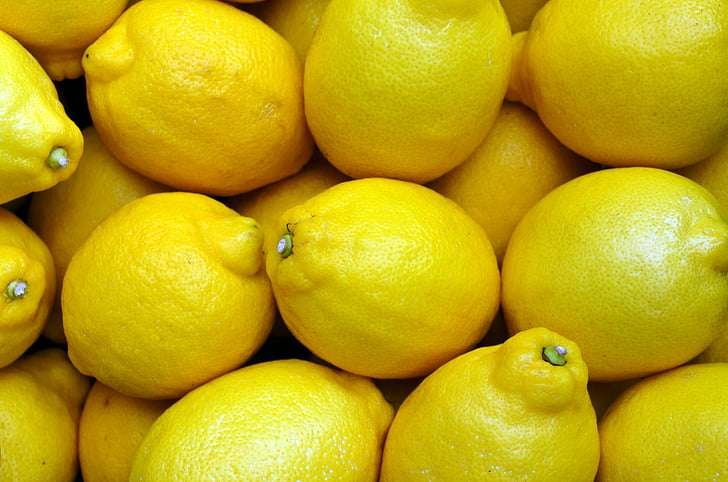Is There a Lemon Shortage? Have you noticed that there are fewer lemons in the store these days? We will discuss what might be causing this and how it might affect the foods and drinks we like to make.
Is There a Lemon Shortage? The lemon business is also significant; costs could increase, and people could lose jobs. It’s not a big deal that we have lemons right now, but we should keep an eye on them. Get ready for this exciting investigation, where you must find all the important clues.
People have said Is There a Lemon Shortage? which could hurt the business and our kitchens. We have enough of something because of things like the weather changing and how we farm. Our lemonade and vegetable dressings might only be available if there are enough lemons.
Table of Contents
History Of Lemon
Lemons are very old and were first brought to the United States from Asia. They lived along trade lines and were very popular in the Mediterranean, where they were always cooked. Early 15th-century travelers and traders brought lemons to the Americas.
Since then, people worldwide have used lemons extensively in food, drinks, and everyday items. Many places, like Spain, Italy, Argentina, and the US, grow them. It’s a big business. But now our spicy friends need help. There are not enough lemons because of many issues, so we need to find out if there will be fewer lemons in the future.
Is There Any Shortage of Lemons In 2024?
The last time anyone said Is There Any Shortage of Lemons In 2024?. They should be easy to find if you want to make lemonade or need them for cooking. Nevertheless, farming, like any other business, can be affected by numerous factors. The amount of lemons farmers can grow can be limited by bad weather, bugs, and diseases.
Different factors may also be necessary, like the quantity of lemons someone desires, the rules for sending lemons to other countries, the lack of workers to pick the lemons, or problems with transporting the lemons from the farm to the shop.
Remember to think about the weather. It might have effects on lemon farmers that they don’t expect. Customers and businesses should always be ready for anything, even if we don’t need lemons immediately.
It also makes a difference where you live. In some cases, there might need to be more lemons for everyone if they are grown far away and must be brought in. Each person in the world has an abundance of lemons (2024).
Importance Of Lemons In The Industry
In many fields, lemons are like great heroes who always come through for you. Citrus fruits aren’t just for making juice. Their sour taste adds more flavor to food and makes baked goods taste better.
Lemons can be used to make drinks, food dressings, and lemonades. Additionally, they enhance the taste of meats and seafood when creating marinades and sauces. Lemon juice and the skin of the lemon give baked goods like cakes and muffins a unique sour taste.
Relax, there’s more. Lemons can be used for more than just eating or drinking them. They are popular as home cleaning products because they work well. There are many reasons why people like putting them on their faces. Doctors say Vitamin C can help keep your face healthy and your immune system strong.
Even now, citrus fruits are helpful in many areas, such as health. Lemons and other citrus foods are good because they have vitamin C. Lemon juice can help with a sore throat or stomachache.
These reasons make lemons useful in the kitchen, the closet (for cleaning tools), or the medicine cabinet. As expected, people are upset that they don’t have enough oranges.
Why Was There a Shortage of Lemons?
Weather problems in 2023 ruined the lemon fields, so there needed to be more Lemon Shortage for everyone. Picture very cold winters, very hot summers, and storms that come out of nowhere and damage the lemon crops. Because of this bad luck, farmers around the world could not grow as many lemons, which caused a shortage.
Climate change was a big reason why this happened. Lemon farms worldwide have been hit by bad weather because of climate change. In the winter and summer, cold and hot weather hurt farmers’ crops. There were unexpected hailstorms in some places that hurt the baby lemons and too much rain in others that made the lemon plants sick with fungi.
Then, the disease spread, which made things even worse. Because of the pandemic, getting lemons from where they are grown to shops was hard. With rules like “not moving things” and “not enough people to help,” it was hard to get lemons from the farm to the market, which meant that there were even fewer lemons to choose from.
Not only that, but people wanted lemons. People love to use lemons in their cooking, cleaning, beauty routines, and to make drinks. Also, the desire for lemons increased even more when more people learned they were good for you. Having few lemons to begin with made it easier to find them.
You may also read!
Is There A Blueberry Shortage?
Is There A Costco Egg Shortage?
Is There A Pineapple Shortage In 2024?
Future Outlook Of Lemon
Lemons will continue to do well in the future because more people will want them, and new ways will appear to use them. What’s going to change the future of lemons:
Market Growth
More Demand: Many people drink extra lemon juice because they believe it boosts their immune systems and provides them with vitamin C.
New Uses: You don’t have to make lemonade with lemons. They’re growing in fancy drinks, snacks, and even cleaning products.
Global Reach: Lemons are becoming popular in Asia and Africa, giving more chances for growers and sellers.
Challenges and Opportunities
Climate Stuff: Changes in the weather can mess up lemon fields, making them harder to grow and causing prices to go down or up. However, if you use methods that won’t harm the environment, things can stay stable over time.
Sick Trees: Bugs and diseases can damage lemon trees and cause them to produce less fruit. Scientists aim to create trees that are better able to handle these issues.
New Ideas: To make more money and waste less, you can come up with new lemon goods, better ways to process them, and better ways to handle them after you pick them.
So, the lemon industry faces some problems, such as climate change and tree diseases, but it also has many great chances to keep growing.
Conclusion: Lemon Shortage
Is There a Lemon Shortage? There are enough lemons for now, but the supply chain is at risk because of diseases, bad weather, and transport problems. While lemons are famous and can be used in many ways, the lemon business will face challenges and opportunities in the coming years.
Citrus fruits like lemons are becoming more popular because they suit you. Companies will be able to grow because of this. To grow lemons healthily, we need to find new ways to do things, use methods that won’t harm the environment, and adapt to it.
FAQs– Lemon Shortage
Why Don’t There Seem To Be Enough Lemons?
The current heat wave and long-lasting drought in California have cut down on lemon supplies, which has caused prices to skyrocket.
Why Need More Lemons In The UK?
Since fewer lemons are coming from Argentina, there are fewer of them on the market in the UK. South America is the biggest supplier to the market in the southern hemisphere, but its main growth area, Tucumán, has been hit by bad luck.
What’s With The High Price Of Lemons In 2024?
Why do not lemons cost so much these days? Mainly three main reasons: The supply is only sometimes since citrus trees only bear fruit every two years. For example, in Australia, lemons are most plentiful in the winter, but they’re less available now because of heavy rain in Victoria and Queensland, affecting crops.
When Can You No Longer Get Lemons?
Meyer lemons are only available at certain times, while regular lemons are easy to find all year. From December to May is the best time to see them.
What Nation Eats The Most Lemons?
India consumed the most lemons and limes in 2019, with 3.2 million tonnes, followed by China with 2.4 million tonnes and Mexico with 1.9 million tonnes. Together, they make up 38% of the world’s lemon and lime use.







